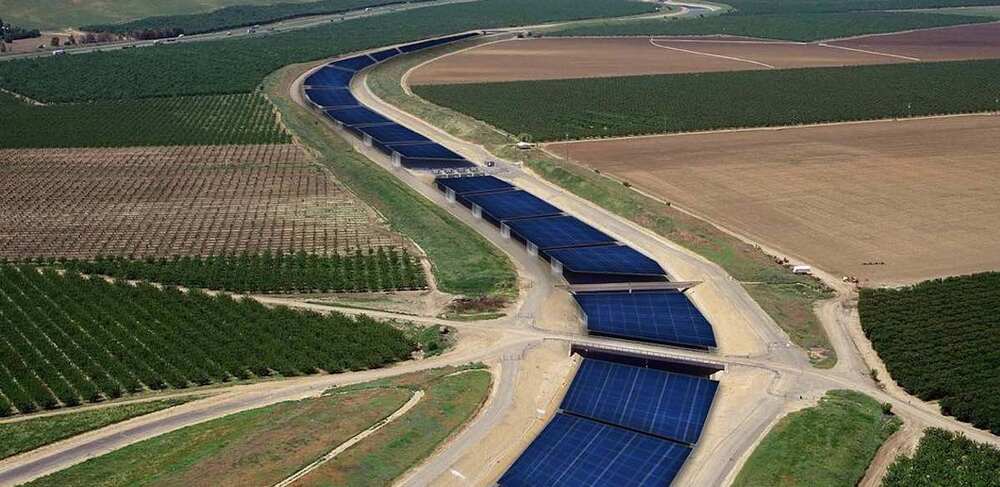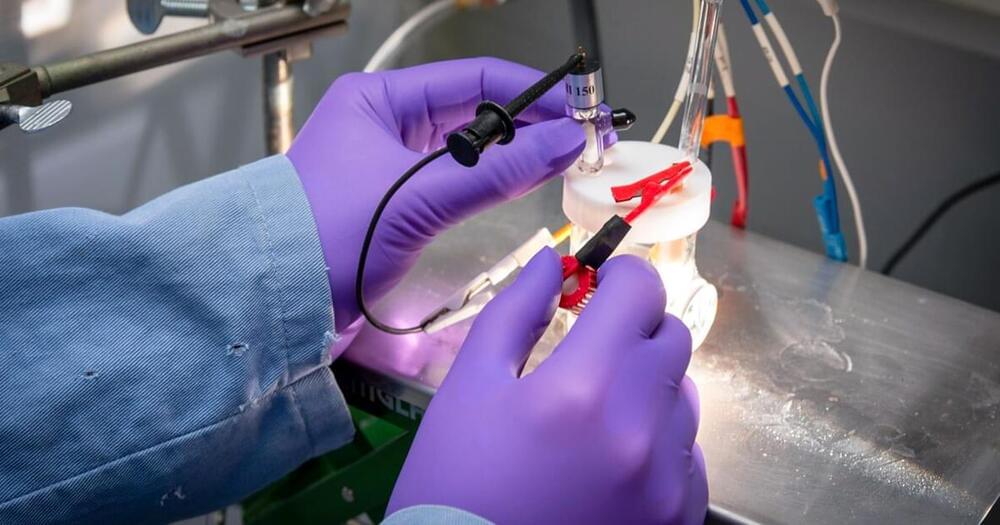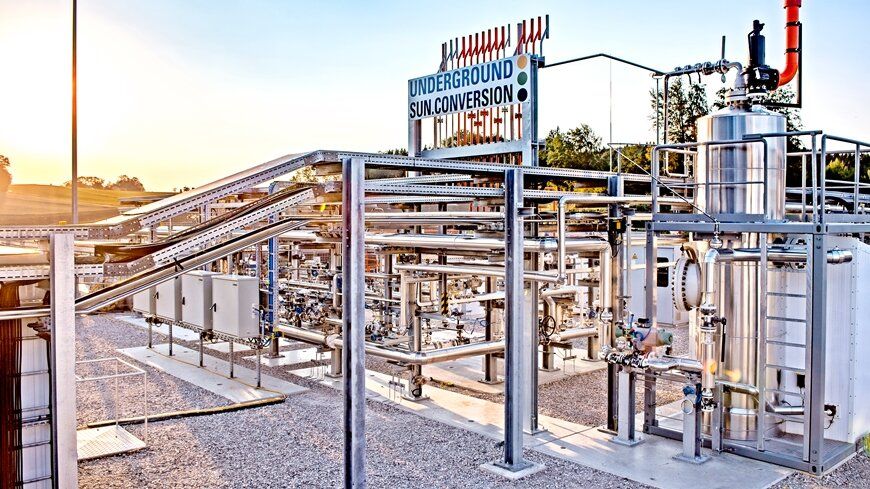Landfill, aka garbage dumps or tips, can, under the right conditions, be converted into solar farms once they’re capped.



Transportable tiny homes are complex operations, to say the least. Designing them to be sustainable makes building them that much more of an intricate process. First Light Studio, a New Zealand-based architecture group built their own tiny home with help from a local company Build Tiny, Ohariu, checking all of the above boxes. Built to be net-zero through several sustainable features and compact enough to meet all NZTA regulations for mobile homes.
Ohariu was built by First Light Studio and Build Tiny from a client’s brief calling for, “a refined tramping lodge on wheels.” That’s code for hiking, for all us Americans. Since the tiny home would primarily be used for hiking trips and traveling throughout the outdoors, Ohariu was built to be adaptable and versatile above all else. Inside, the living spaces are described by the architects at First Light Studio as being, “more a large and very detailed piece of furniture than a traditional house build, the fit-out [focusing] on the things that are important and necessary.”
Catering to the necessities and casual family pastimes, the tiny home is doused in modular and multifunctional design that’s surrounded by creamy poplar plywood walls and silvery fittings that add a touch of refinement to an otherwise bare interior. Each furniture piece inside Ohariu doubles as storage to maintain an open, clutter-free interior where the tiny home’s family would bond over pastimes like cooking, playing card games, and enjoying the surrounding landscape. Featuring a chef’s kitchen, Ohariu comes with plenty of prep space for cooking and integrates tilt-up tabletops to make even more for when there’s company. Outside, Ohariu is coated in a stealthy ebony corrugate to match its lightweight mobility, supported by aluminum joinery, lights, and utilities that were given the same ebony finish. Ohariu’s roof is asymmetrical with six solar panels lined up on its longer side and a mezzanine bedroom cozying up beneath its sloped short side.

UC Santa Cruz is investigating this method as a possible generator of solar energy that would allow for the saving of 63.5 billion gallons of water from evaporation annually, a massive windfall for a state that sometimes rations water and which regularly suffers from droughts.
If mounted above irrigation canals, the shade of solar panels would reduce evaporation by 63 billion gallons, while generating clean energy.

Physics World
A device that can generate electricity while desalinating seawater has been developed by researchers in Saudi Arabia and China, who claim that their new system is highly efficient at performing both tasks. The device uses waste heat from the solar cell for desalination, thereby cooling the solar cell. It also produces no concentrated brine as waste, cutting its potential environmental impact.
In many parts of the world, climate change and population growth are putting huge demands on freshwater supplies. In some coastal regions, desalination – removing the salt from brackish water or seawater to turn it into fresh water – is increasingly being used to meet demand. Indeed, there are now around 16000 desalination plants around the world producing about 95 million cubic metres of freshwater every day.
However, current desalination systems can be expensive and energy hungry, producing significant carbon emissions. The process can also produce highly concentrated salt water, or brine, as well as freshwater. This brine can also contain toxic chemicals introduced during the desalination process and if not disposed of properly, it can have negative environmental impacts.


Now, researchers are homing in on an artificial photosynthesis device that could let us do the same trick, turning sunlight and water into clean-burning hydrogen fuel for our cars, homes, and more.
Solar cells already let us convert sunlight into electricity. Artificial photosynthesis devices, however, use sunlight to turn water or carbon dioxide into liquid fuels, such as hydrogen or ethanol.
These can be stored more easily than electricity and used in different ways, allowing them to substitute for fossil fuels like oil and gas.

A team of researchers from the Max Planck Institute of Molecular Plant Physiology, the University of Naples Federico II, the Weizmann Institute of Science and the Porter School of the Environment and Earth Sciences has found that making food from air would be far more efficient than growing crops. In their paper published in Proceedings of the National Academy of Sciences, the group describes their analysis and comparison of the efficiency of growing crops (soybeans) and using a food-from-air technique.
For several years, researchers around the world have been looking into the idea of growing “food from air,” combining a renewable fuel resource with carbon from the air to create food for a type of bacteria that create edible protein. One such project is Solar Foods in Finland, where researchers have the goal of building a demonstration plant by 2023. In this new effort, the researchers sought to compare the efficiency of growing a staple crop, soybeans, with growing food from air.
To make their comparisons, the researchers used a food-from-air system that uses solar energy panels to make electricity, which is combined with carbon dioxide from the air to produce food for microbes grown in a bioreactor. The protein the microbes produce is then treated to remove nucleic acids and then dried to produce a powder suitable for consumption by humans and animals.

About 2.2 billion people globally lack reliable access to clean drinking water, according to the United Nations, and the growing impacts of climate change are likely to worsen this reality.
Solar steam generation (SSG) has emerged as a promising renewable energy technology for water harvesting, desalination, and purification that could benefit people who need it most in remote communities, disaster-relief areas, and developing nations. In Applied Physics Letters, Virginia Tech researchers developed a synthetic tree to enhance SSG.
SSG turns solar energy into heat. Water from a storage tank continuously wicks up small, floating porous columns. Once water reaches the layer of photothermal material, it evaporates, and the steam is condensed into drinking water.

During the winter months, renewable energy is in short supply throughout Europe. An international project is now considering an unconventional solution: Renewable hydrogen and carbon dioxide are pumped into the ground together, where naturally occurring microorganisms convert the two substances into methane, the main component of natural gas.
Underground Sun Conversion technology, patented by the Austrian energy company RAG Austria AG, offers a way to seasonally store renewable energy on a large scale and make it available all year round. In summer, this involves converting surplus renewable energy—solar power, for instance—into hydrogen (H2). This is then stored together with carbon dioxide (CO2) in natural underground storage facilities—for example, former natural gas deposits—at a depth of over 1000 meters.
This is where little helpers come into play: Microorganisms from prehistoric times, so-called archaea, convert hydrogen and CO2 into renewable methane (CH4) via their metabolism. Archaea are found all over the world, mainly in anaerobic, i.e. low-oxygen environments; they were responsible for converting biomass into natural gas millions of years ago. By feeding hydrogen and CO2 into suitable porous sandstone deposits, this process can be started all over again. The methane “produced” in the depth can then be withdrawn from the reservoirs during winter and used in a variety of ways as CO2-neutral natural gas.
